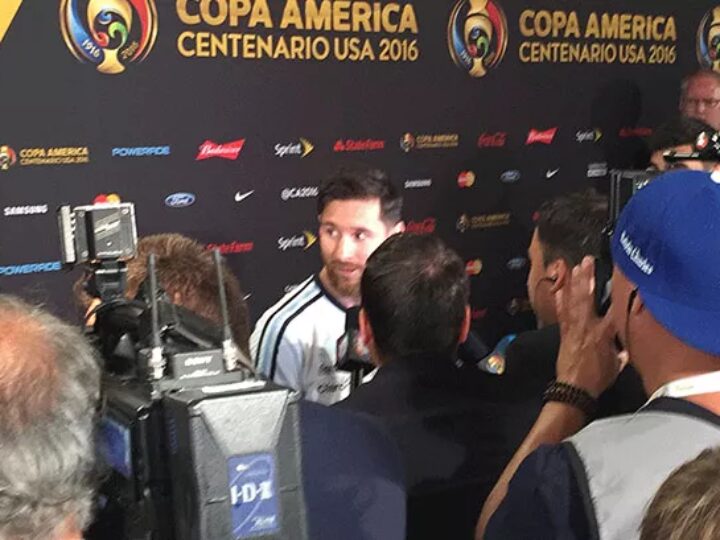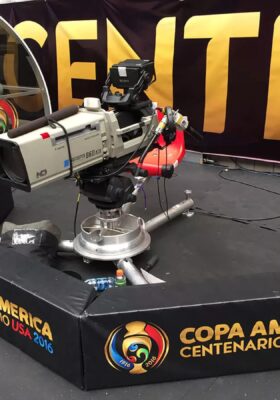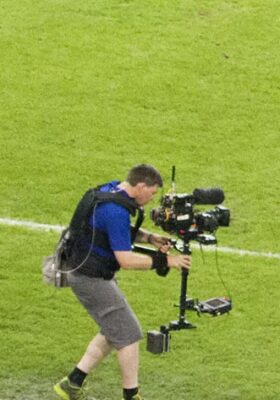HBS Looks Back On Copa Centenario

During the month of June 2016, the Copa America Centenario saw HBS set up camp in the USA to participate in this historic event as official provider and production partner, performing a wide range of broadcast solutions to support organiser CONCACAF. Chile having claimed victory and the HBS staff having travelled home after a unanimously successful delivery, it is now time to look back on the operation and main features showcased during Copa.
For all HBS team members based at the Broadcast Operations Center (BOC), which was based in Atlanta, Georgia, the partnership proved a great opportunity to collaborate with U.S. personnel, learn from this experience and push some of the innovations HBS had been working on, for today’s and tomorrow’s sports broadcast operations.
HBS experts complementing local production staff
In comparison to other major sporting events where HBS is the sole host broadcaster and therefore brings in its whole team to oversee the coverage, this edition of Copa saw HBS take on the role of complementary “production partner” to CONCACAF. This meant that a small team of experts from HBS came to supplement the local operation set up by the organisers.
This support materialised with HBS providing match coverage host broadcasting guidelines and definition of the production plan, organising pre-production seminars for match directors, providing key personnel for the five match production crews (including three World Cup directors), and providing quality control of all matches and feeds. In this role, HBS constantly tried to drive the product forward, erase mistakes and enhance the coverage for every game.
First-time online server for supplementary video content
Thanks to HBS’ development team, it was the first time for a Copa America to provide an online content server for all broadcasters. During a total sequence of three months, HBS’ experts from digital and editorial teams developed, built and managed an online server, in order to provide a tool for the rights holders to access additional footage available at their fingertips from anywhere in the world.
From Seattle to Orlando and from Pasadena to Foxborough, seven Electronic News Gathering (ENG) crews were deployed to collect interviews with players and teams, training sessions, press conferences and behind the scene content. All this content was then distributed through the server to the broadcasters, with e-mail notifications when new content was made available to them.
Additional immersive experience testing
The tournament final was also a fantastic testing platform for HBS as it was decided to use small cameras with Radio Frequency (RF) solution to insert a Point Of View (POV) perspective through the usage of a wide angle camera placed amongst the fans, in order to include the fan experience in the traditional match coverage. From camera to receiving antenna to Outside Broadcast (OB) van, this additional content was used by the match director for second run replays and by broadcasters through the Additional Content Feed (ACF). Adding these images and sound to the broadcast made for a truly immersive experience for all viewers.
The final match was also produced and distributed live in 4K, with a 10 camera plan working side by side with the 30 cameras of the main HD production. HBS’ contribution included setting the 4K coverage guidelines, producing the 4K specific running order and providing key production staff, such as the match director, an English Guide Commentator, a Coordinating Producer, an EVS Producer and two Camera Operators. As with the rest of the match feeds, the 4K signal was monitored by HBS Quality Control Producer in Atlanta to ensure the highest technical and editorial level.
Overall, the month-long event was a fantastic experience for HBS in collaborating with local talent, bringing its long time host broadcast expertise to the table and contributing its innovation-led ambition to such an historical sporting event as the Copa America Centenario. Working in the U.S.A. was a great opportunity for HBS. Getting to know the North American market better, meeting providers and broadcast professionals, and adapting to American workflows and procedures: all of this contributed to extend and build HBS’ knowledge and experience.

